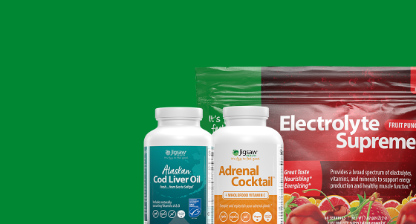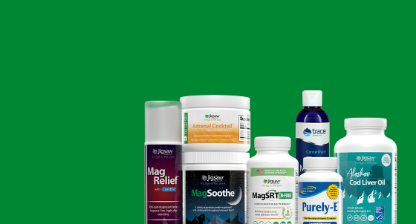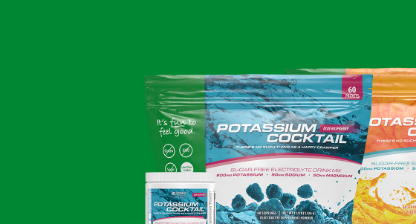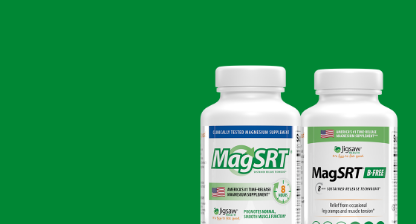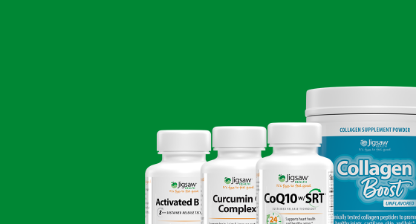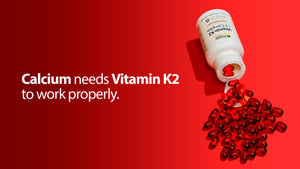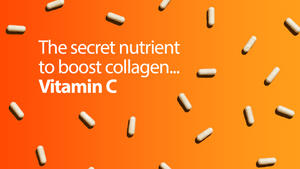Why does Exercise make you feel better?
Hint: It's not Endorphins...
Thomas DeLauer breaks down the science behind the important relationship between Exercise and Mood and how to Maximize the effects of your workout on the latest #ScienceSaturday
Make sure you are meeting the RDI 400mg of Magnesium per day with Jigsaw's MagSRT™ – America's #1 Time-Release Magnesium Supplement.
Click here to add 3 bottles of Jigsaw MagSRT™ to your cart and save $20.94 + $10 off.
Transcript by Rev.com
- What's going on Jigsaw Land? You know magnesium makes you feel good, but you know what else makes you feel good? A little bit of exercise, and I'm gonna explain to you exactly why it's happening. And a little bit of a forewarning, it's not endorphins like you think it is. So let's get straight to the facts, and let's get straight to how this truly is working within your body.
-All right, so let's talk about what makes you feel good in the brain when you're working out, and if you know this you're gonna start to learn how you can maximize and how you can capitalize on it. First and foremost, it's not endorphins. Believe it or not people always associate that runner's high or that exercise high with endorphins. A lot of studies have measured endorphins, and we do know that endorphins elevate during a workout or during activity. But here's the thing, endorphins don't cross the blood-brain barrier. They can help your body feel good. They can even help your organs function better. They can even help different catecholamines. They can help different actions within the body. And they can help loosen you up. So they're not a bad thing at all; they're really good, but they don't cross the blood-brain barrier so they're not affecting your mood.
-So what exactly is going on? Well, it's something completely different and it's a whole different world. It's called anandamide. Anandamide is a neurotransmitter/endocannabinoid, and what that means is that it acts on the body in a completely different way. You see what endocannabinoid is, is just like the name implies, it works on the cannabinoid receptors in the body. So we're talking things like cannabis. We're talking things like cannabidiol oil. The way that those make you feel, that's the way that endocannabinoids work. That's why when you're working out or when you're running, or you're getting that runner's high, you're having that feeling, that feeling of bliss, that feeling of where there's no pain. The whole idea behind that is that's exactly what endocannabinoids do, and that's exactly what certain neurotransmitters do is they block pain. In fact, the word anandamide comes from the Sanskirt word bliss. So we're literally talking about bliss where you don't feel pain, you don't feel that stress. It's really remarkable what exercise does in the way of anandamide.
-Here's how it actually works in the body. Anandamide increases something known as brain-derived neurotrophic factor. Now I talk about this a lot. I think there's probably 10 or 12 videos where I mention BDNF. But in this particular case we're gonna talk about it from a slightly different angel. Brain-derived neurotrophic factor is brain fertilizer. It's what helps grow new brain cells. But not only does it trigger the brain stem cells to produce new cells, it also protects the existing brain cells, which is exactly what we're feeling when we're getting that high when we're working out.
-You see, a massive influx of calcium that is a response to stress whenever we're working out is what's triggering this. So that massive increase in stress and that massive increase in calcium activates what are called transcription factors. These transcription factors trigger the release of particular neurotransmitters that trigger more BDNF. So it all has to do with this chain reaction. When we have more BDNF, we have more neurons which means we have more response to different things. We're more in touch with ourselves. We feel more alive. We feel more alert.
-But the cool thing is the protective process. You see what ends up happening is that BDNF protects the old neurons. It keeps them from dying, but it also makes them more resilient. So get this, by working out, by exercising, by having mild stress on the body, we are training the brain to become more resilient, which is exactly why we feel so good. Stress literally doesn't affect us as much, because the BDNF has put this protective layer around the brain cells so they don't get affected as badly. It's truly remarkable, and it actually has effects that stick.
-So even when you're working out and you feel amazing and then you kinda come down from that workout high, you're still at a baseline that's higher than you were before. Each and every time you work out and you increase that BDNF, you are increasing your brain cell's resilience. That little bit of stress that you put yourself through is doing amazing things in terms of getting you, well, high so to speak. It's been shown in a lot of studies that people that exercise and do more aerobic activity have significantly lower instances of anxiety and depression. They also bounce back faster, and that's what's important. Because in reality, it's okay to get stressed, it's okay to get depressed; it's part of life. But how you bounce back from it and how you recognize it is what's everything. So if you're active and you have the ability to bounce back from that depression or bounce back from that low part of your life, that's what makes you powerful. That's what makes you get up the next day and get to the gym again so you can get in amazing shape.
-Now there's one other thing we have to factor in, too. That brain-derived neurotrophic factor has a reciprocal agreement with seratonin. What I mean by that is it sort of has this arrangement where when BDNF elevates, seratonin elevates. Seratonin is a neurotransmitter that helps you feel good, helps you feel a little bit relaxed, helps you feel like everything is all good in the world. But increases in seratonin also cause more increases in BDNF. So it's like this cycle where it constantly elevates each other: more BDNF, more seratonin, more seratonin equals more BDNF, and it goes on and on and on. So then you end up feeling really good, and quite honestly get a little bit smarter and a little bit more resilient in the process.
-There was even a study that was published in the American Journal of Preventative Medicine that took a look at those that did aerobic activity for 30 minutes three times per week ended up having a 50% reduction in their depression and anxiety symptoms. That's just 30 minutes three times per week. Now, we definitely feel this a little bit more when it's aerobic activity like this study implies, but there's another study too. This study was done by Princeton University, and this study revealed was that exercising increases the production of these new neurons that secreted GABA, gamma-Aminobutyric acid. Now GABA is something that helps you fall asleep and helps you feel calm. This GABA is very, very important. It's very important to the natural cycle of our bodies. Right before we fall asleep we usually have a massive influx of GABA. It's what helps us feel like all is good in the world and we can just relax and let go and not be affected by everything. Kinda sounds familiar, right? Just how you would feel right after an amazing workout.
-So as we know laughter is an amazing medicine, exercise is definitely an awesome medicine, but magnesium's right up there too. So make sure you click on the link and checkout Jigsaw's MagSRT so you can get the most out of your magnesium, get the most out of your life, but also capitalize and maximize the feelings that you're already getting from your workout. I'll see ya there.


